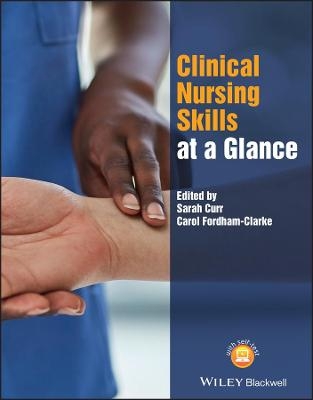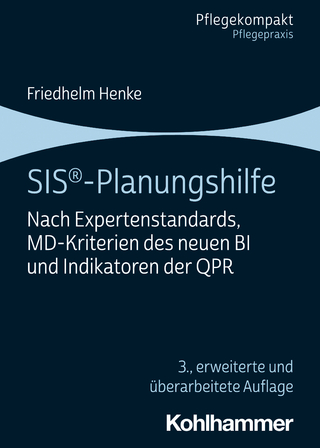
Clinical Nursing Skills at a Glance
Wiley-Blackwell (Verlag)
978-1-119-03590-9 (ISBN)
Designed to allow rapid reference to critical information, the book is divided into 12 sections organised around systems of the body, with each chapter describing a specific clinical skill. With high-quality images throughout, applications to practice, a review quiz, ‘red flags’ highlighting important aspects to consider in the clinical environment, and reflecting current NMC standards of proficiency for registered nurses, this new evidence-based guide:
Allows easy access to the necessary knowledge and skills required by nurses to provide quality care
Discusses general principles of care applicable to all, including verbal and non-verbal communication, record keeping, and admission and discharge procedures
Covers mandatory skills such as basic life support, infection control, and medicine management
Includes access to a companion website featuring interactive multiple-choice questions, case studies, and links to additional resources
Offering superb illustrations, up-to-date information, and a reader-friendly approach, Clinical Nursing Skills at a Glance is an invaluable resource for pre-registration nursing students as well as newly qualified nurses, healthcare assistants, and allied healthcare professionals looking to expand their knowledge of nursing skills and procedures.
Sarah Curr is a Lecturer in Nursing Education with a strong clinical skills and simulation focus at the Faculty of Nursing, Midwifery, and Palliative Care, King’s College London, UK. Carol Fordham-Clarke is a Lecturer and Clinical Skills Lead for Nursing at the Florence Nightingale School of Nursing & Midwifery, King’s College London, UK.
List of contributors viii
Acknowledgement ix
About the companion website x
Part 1: 1 Introduction: the setup of this book and how to use it 2
Part 2: Principles of skills 3
2 Care planning and the nursing process 4
3 Communication – fundamentals 6
4 Record keeping 8
5 Communication – de- escalation 10
6 Communication – difficult conversations 12
7 Informed consent 14
8 Privacy and dignity 16
Part 3: Mandatory skills 19
9 Moving and handling 20
10 Moving and handling: turning in bed, transfers, and hoisting 22
11 Basic life support 24
12 The choking patient; the recovery position 26
13 Infection control 28
14 Medicine management 30
15 Injection technique 32
16 National early warning score (NEWS) track and trigger system 36
Part 4: Neurological skills 39
17 Assessing level of consciousness 40
18 Assessing pupil reaction and limb strength 44
19 Assessing cognition 46
20 Pain assessment 48
21 Neurovascular assessment 50
22 Assessing and managing seizures 52
Part 5 Respiratory skills 55
23 Assessing and managing the airway 56
24 Respiratory assessment 58
25 Monitoring oxygen saturations 60
26 Arterial blood gas analysis 62
27 Chest auscultation 64
28 Peak expiratory flow rate 66
29 Administering oxygen 68
30 Nebulisers and inhalers 70
31 Tracheostomy care 72
32 Chest drain management 74
Part 6: Cardiovascular skills 77
33 Taking a pulse 78
34 Blood pressure 80
35 Temperature assessment 82
36 Non- invasive circulatory assessment 84
37 Central venous pressure monitoring 86
38 Electrocardiogram 88
Part 7: Gastrointestinal skills 91
39 Nutritional screening 92
40 Supporting eating and drinking 94
41 Nasogastric tube insertion 96
42 Enteral feeding 98
43 Management of diarrhoea 100
44 Management of constipation 102
45 Administration of suppositories and enemas 104
46 Stoma care 106
Part 8: Genitourinary skills 109
47 Urinalysis 110
48 Continence assessment 112
49 Urinary catheterisation 114
50 Catheter care 116
51 Catheter removal 118
Part 9: Musculoskeletal skills 121
52 Assessing tone and ability to mobilise 122
53 Venous thromboembolism assessment and risk reduction 124
54 Anti- embolic stockings 126
55 Musculoskeletal minor injuries: assessment and treatment 128
56 Falls – prevention, assessment and management 130
57 Stabilisation: neck collar 132
58 Care of the patient with spinal cord injuries – log roll 134
Part 10: Integumentary skills 137
59 Personal hygiene 138
60 Personal hygiene – mouth and hair care 140
61 Pressure ulcer – prevention and management 142
62 Venous ulcer assessment 144
63 Wound dressing using aseptic non- touch technique (ANTT) 146
64 Burns management 148
65 Care after death 150
66 Management of surgical drains 152
67 Suture and staple removal 154
Part 11: Endocrine skills 157
68 Capillary blood glucose monitoring 158
Part 12: Circulatory Skills 161
69 Venepuncture 162
70 Cannulation 164
71 Intravenous fluid therapy 166
72 Fluid balance monitoring 170
73 Blood transfusions 172
Index 174
| Erscheinungsdatum | 17.03.2022 |
|---|---|
| Reihe/Serie | Wiley Series on Cognitive Dynamic Systems |
| Verlagsort | Hoboken |
| Sprache | englisch |
| Maße | 216 x 279 mm |
| Gewicht | 482 g |
| Themenwelt | Medizin / Pharmazie ► Pflege |
| Schlagworte | Clinical Skills • General Clinical Nursing • Klinische Fertigkeiten • Klinische Krankenpflege • Krankenpflege • Medical Science • Medizin • nursing |
| ISBN-10 | 1-119-03590-2 / 1119035902 |
| ISBN-13 | 978-1-119-03590-9 / 9781119035909 |
| Zustand | Neuware |
| Haben Sie eine Frage zum Produkt? |
aus dem Bereich


